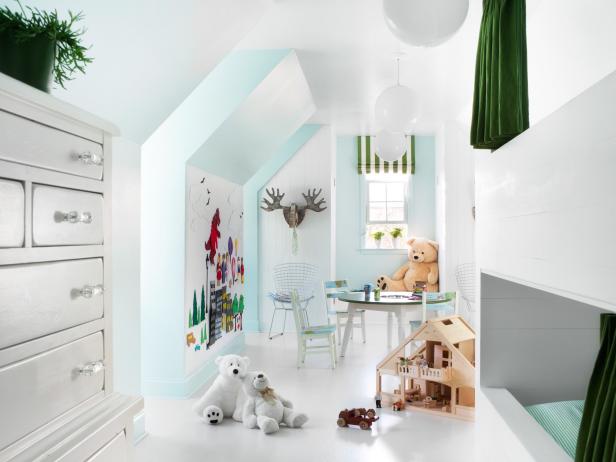Designing spaces for kids requires a combination of creativity, practicality, and safety. The room should not only be aesthetically pleasing but also functional and conducive to learning, playing, and resting. Here are some ideas to create a vibrant, engaging, and secure environment for your little ones.
1. Theme-based Designs:
- Adventure Jungle: Create a space with wildlife wallpapers, animal-shaped rugs, and hanging vines. Incorporate wooden treehouse-styled beds for added fun.
- Space Odyssey: Decorate with glow-in-the-dark stars, planets, and rocket ships. A spaceship-shaped bed can become the centerpiece.
2. Multi-functional Furniture:
- Loft Beds: These beds are raised, creating space underneath for a desk, storage, or a play area.
- Expandable Desks: Start with a compact desk that expands as your child grows and needs more space.
- Storage Benches: These can double as seating as well as storage for toys and books.
3. Interactive Walls:
- Chalkboard Paint: Turn a wall or part of it into a canvas for your child’s creativity.
- Magnetic Walls: Perfect for sticking art projects or playing with magnetic toys.
- Educational Wallpapers: World maps, alphabets, or numbers can be both decorative and informative.
4. Zoning:
- Rest Zone: Ensure the bed is comfortable and is paired with blackout curtains to promote a good night’s sleep.
- Play Zone: This area should have a soft rug or mat, easy access to toys, and enough space for movement.
- Study Zone: Place a desk near the window for natural light, add a comfortable chair, and ensure adequate storage for stationery and books.
5. Safety First:
- Rounded Furniture: Opt for furniture with rounded edges to prevent injuries.
- Secure Furniture: Ensure bookshelves and other tall furniture are anchored to prevent them from tipping over.
- Non-toxic Materials: Ensure all paints, finishes, and materials used are child-safe and free from harmful chemicals.
6. Playroom Essentials:
- Art Corner: Include a small table with coloring materials, papers, and craft supplies.
- Reading Nook: Create a cozy corner with a teepee or a soft chair, surrounded by shelves of age-appropriate books.
- Activity Mats: These can be puzzles, city layouts for toy cars, or alphabet and number mats.
7. Lighting:
- Ambient Lighting: Soft lighting for general room illumination.
- Task Lighting: Focused light for reading or studying.
- Nightlights: These provide a soft glow, ensuring kids feel secure at night.
8. Personalize the Space:
- Name Decals: Customized name stickers for walls or doors.
- Display Art: Showcase your child’s art projects in frames or on strings with pegs.
- Favorite Colors: Incorporate your child’s favorite colors in the decor.
Conclusion: Designing a child’s room is an opportunity to create a nurturing environment where they can grow, learn, and play. With a mix of imagination and practicality, you can craft a space that your child will cherish for years to come. Remember, it’s not just about aesthetics; it’s about creating a haven where your child feels secure, inspired, and loved.


